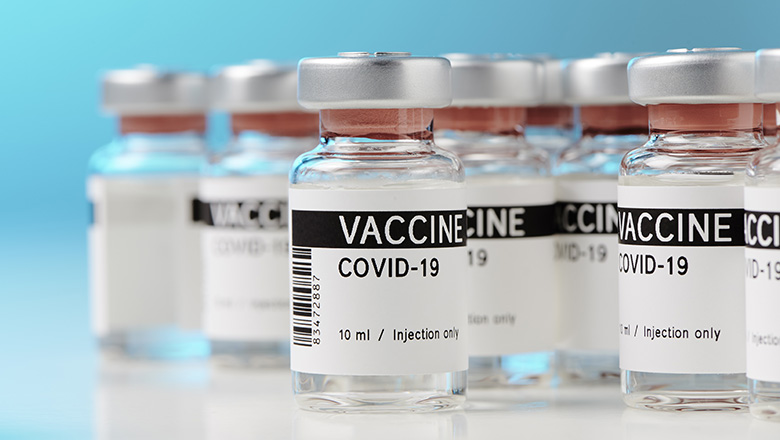
April 7, 2021
Learn about the latest CDC guidance for fully vaccinated people.
For more CDC data and information surrounding the coronavirus vaccine, click here.
To find and schedule an appointment for the vaccine, visit the NYC Covid-19 Vaccine Finder or the New York State vaccine site.
All New Yorkers aged 16 an older—including Borough of Manhattan Community College (BMCC/CUNY) students, faculty and staff—are now eligible for the Covid-19 vaccine. So far, more than 107 million individuals in the United States have received at least one dose of the vaccine with an average three million more being vaccinated each day according to data from the Centers for Disease Control and Prevention (CDC).

Despite the vaccine’s tested safety and efficacy, there is still some concern among individuals throughout the country, including BMCC community members.
BMCC recently hosted two virtual town-hall events, one for faculty and staff, and another for students where campus officials provided updates on BMCC’s potential transition to in-person classes and services in Fall 2021.
Several hundred BMCC community members attended each event and were asked a series of survey questions including whether or not they plan to get the Covid-19 vaccine.
The March 17 student poll showed that 13% of BMCC students have already gotten the vaccine while 39% plan to get it. Among the 360 students in attendance, 30% said they are hesitant about getting the vaccine while 18% say they will not get the shot.
Faculty and staff were asked the same questions on March 18. Among the 470 BMCC faculty and staff attending the event, 28% said they had already gotten the vaccine while 36% plan to do so. In addition, 25% said they are hesitant and 11% of BMCC said they do not plan to be vaccinated.
While the pool of students, faculty and staff surveyed was relatively small in comparison to BMCC’s total enrollment and employment figures, the surveys reflect hesitancy about the vaccine that stems from concerns about possible side effects and worry the vaccines were developed too quickly.
Vaccine hesitancy disappears as more individuals gain information and trust the messengers

A recent Pew Research Center poll showed that vaccine hesitancy is dissipating as more people are safely vaccinated. As of March 5, 69% of the United States public indicated they intend to get the vaccine—up significantly from the 60% who had said they planned to get vaccinated in November.
According to Professor Lesley Rennis, Chairperson of the BMCC Health Education Department, when making health decisions such as whether or not to get the Covid-19 vaccine, individuals consider a myriad of factors. These often include their own health status, family history, community and neighborhood experiences, socioeconomic status and political beliefs.
“Scientific facts are good, but the real issues of trust and perception are often more important,” said Rennis, who along with Science Professor Catarina Mata plan to lead a series of workshops and outreach efforts to answer questions and help address concerns BMCC students, faculty and staff may still have about getting vaccinated.
“Receiving information from trusted faculty and having a solid understanding of the relevant science and public health issues may help with their decision-making,” said Rennis. “Most vaccine hesitancy studies point to trust and respect of the messenger as often having more weight than scientific data, especially among marginalized populations.”
Long history of vaccine hesitancy throughout the world
Rennis said hesitancy surrounding vaccines has existed as long as vaccinations themselves. For example, initially, there was staunch opposition to the 1700s-era scientist and physician Edward Jenner’s ideas surrounding how the scourge of smallpox spread and how best to stop it with a vaccine made from cowpox.
Clergy thought Jenner’s vaccine was “unchristian” because it came from an animal, she said. Others didn’t trust medicine or Jenner’s science—choosing instead to believe smallpox was caused by decaying matter. Still others didn’t want the government to infringe upon their personal liberty. Over time, public health and science won out and by 1980, the World Health Organization declared smallpox as an officially eradicated disease.
Rennis says with Covid-19, far too much of the national conversation has been focused on the political instead of the scientific.
“Now we have to do our best to focus on the science and become more public-health literate,” said Rennis, citing New York State’s recent public health preparedness program.
“The first thing I do when speaking to friends or family with concerns about the Covid vaccine is to acknowledge their fears,” said Rennis. “Questions about how the vaccine was developed and possible long-term consequences are legitimate, but they have to be answered using science, medicine and public health facts. I also help individuals think about their overall health and well-being. Side effects are to be expected. Many of us remember a toddler in the family being cranky and feverish after receiving their immunizations.”
Any mild side effects go away after a day or so
Professor Mata explains that the mild side effects related to the vaccine are a result of the immune system responding to the foreign protein. The vaccine trains the immune system to recognize and prepare to fight the virus if it is exposed to it.
“Think of it as a wanted poster with the picture of the virus, armed and dangerous,” said Mata. “The protein cannot make you sick because it does not have the virus with it; it shows your immune cells what the virus looks like.”
Side-effects are not unique to the Covid-19 vaccines. They are common with other vaccines in adults, such as the shingles vaccine, Mata explains. Reactions can range from a sore arm to fever, muscle aches and a general flu-like feeling, and they usually go away within a day and a half.
The reaction to the second shot of the Pfizer and Moderna Covid vaccines is likely stronger than the first, Mata says.
“By the time a person receives a second dose, their immune system has produced specialized weapons to neutralize what is now a known invader, which leads it to mount a specialized highly effective and long-lasting response,” said Mata.
Modern sequencing techniques enabled rapid vaccine development
Many individuals are still concerned with how such an effective vaccine came to be developed in such a short amount of time. Previously, the most rapidly developed vaccine was for mumps in the 1960s—that took four years.
“Modern technology allowed sequencing of the new virus genome in weeks,” said Mata. “Several stages that are normally completed sequentially were done at the same time with Covid vaccine development. Also, several clinical trials in different groups happened at the same time.”
Rennis and Mata explain funding was not an issue in the vaccine’s development. Ending the pandemic validated any risk involved on tests and vaccines that might fail.
“Many decades of fundamental research led to this point,” said Professor Mata. “Instead of a virus particle or protein being introduced to the body—so that the body learns to fight it—instructions on how to make the protein are introduced to cells, which then do just that. “They make the protein, release it, and the immune system responds accordingly. This method is faster and less expensive than other approaches. It will likely be the go-to for new vaccines.”
- Anyone aged 16 and older is now eligible for the coronavirus vaccine in New York
- BMCC professors plan to lead workshops that will address concerns and answer questions
- Vaccine trains the immune system to recognize and prepare to fight the virus

